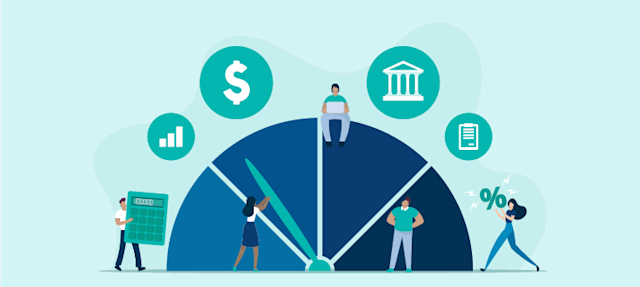What is Credit Utilization, and How Does it Work?

Summary
Credit utilization is the percentage of credit you use compared to your total available credit. Learn about credit utilization and how it affects your credit score and financial future.
In this article:
Managing your credit can sometimes feel like navigating a complex maze of terms and numbers. Credit utilization is one important financial term you may have heard, but you may not be sure exactly what it means or how important it is to your credit score.
Understanding how credit utilization works can give you a better sense of how your credit score is determined and the impact it can have on your financial goals. For younger adults, it’s especially important to get a firm understanding of credit utilization now, so you can make smart decisions about managing your spending, debt and credit in the future.
What is credit utilization?
Credit utilization is the percentage of total credit used in comparison to the total credit you have available.1 This percentage is a factor used by top credit scoring models like FICO® and VantageScore® in calculating your credit score. Your credit utilization can have an influence on your score, and a general rule of thumb is that the lower your percentage, the better.
How is credit utilization calculated?
Credit utilization ratios are calculated in two ways: 1) per revolving credit account and 2) as an overall utilization rate across all credit accounts.2
Per revolving credit account utilization
Some credit scoring models consider the utilization rate on each individual card. High utilization on any single card can negatively impact your credit score, even if your overall utilization is low.3 To see the percentage per card, simply divide the total balance of a credit card by its credit limit, then multiply that number by 100. For example, let’s say you have a $2,800 balance on a card with a $7,500 credit limit. Here's how you would determine your credit utilization ratio:


Overall credit utilization
Your overall credit utilization is calculated in a similar way, except it represents the total amount of credit you’re using on all your credit accounts combined. Overall utilization gives a broader picture of your credit usage and is a significant factor in most credit scoring models. Keeping your overall utilization low is important for maintaining a healthy credit score. Here’s an example using three credit cards:


How does credit utilization affect your credit score?
Each scoring model ranks credit utilization differently, but it’s a significant factor in most models. For example, credit utilization affects up to 30% of your credit score, depending on the scoring model.4 The VantageScore 4.0 model strongly considers your current credit utilization, as well as your trends over the previous two years. What’s most important to remember is that your regular credit utilization rate patterns can make an impact on your overall score, no matter which model is used.5
While there’s no universal standard for a “good” credit utilization ratio, 30% or below is the general guideline per card and overall.6 This ratio contributes to the scoring model and helps measure how responsibly you manage your credit.
How to keep your credit utilization ratio low
If your credit utilization ratio is high, try one or more of these strategies to bring it down and potentially improve your credit score:
- Paying more than the minimum due each month: This not only helps keep your credit utilization low, but it can also help you pay less interest.
- Making more than one payment a month: Try paying a little extra whenever you can. Every little bit helps to bring your balance down.
- Leaving credit cards open after paying them off: Once you pay your credit card balance down to $0.00, don’t close the account. All that unused credit can help lower credit utilization ratio.
- Setting balance alerts: Alerts can help curb overspending and keep your balance and utilization low. Common options include texts, push notifications, and emails.
- Requesting a credit limit increase: If you’ve been responsible with your account, your creditor may increase your available credit. This additional credit can potentially improve your credit utilization ratio. However, it’s important to be aware of the potential for overspending. Some lenders may decline your request if you have too much available credit, since that could put you at risk of going into too much debt and increasing your utilization ratio — the opposite of what you want to do.7
A lower utilization rate could lead to a higher credit score
The amount of available credit you use can impact your credit score in big ways. Consider taking steps today to reach and maintain a low credit utilization ratio to ensure that your credit score and your financial future are as strong as possible.
Sources:
1,2. https://credit.org/blog/what-is-credit-utilization/
3 https://www.experian.com/blogs/ask-experian/credit-education/score-basics/credit-utilization-rate/#:~:text=Individual%20Account%20vs.&text=Credit%20scoring%20models%20may%20consider,overall%20utilization%20is%20relatively%20low.
4. https://www.experian.com/blogs/ask-experian/credit-education/score-basics/credit-utilization-rate/
5. https://www.creditkarma.com/advice/i/new-vantagescore-4-0-explained
6. https://www.bankrate.com/credit-cards/advice/credit-utilization-ratio/#what-is-a-credit-utilization-ratio
7. https://www.thebalancemoney.com/possible-reasons-your-credit-limit-increase-was-denied-961102
This article was updated since its original posting in 2021. Kia Jackson and Kim Gallagher contributed to this post.
This article is for general education and informational purposes, without any express or implied warranty of any kind, including warranties of accuracy, completeness, or fitness for any purpose and is not intended to be and does not constitute financial, legal, tax, or any other advice. Parties (other than sponsored partners of OneMain Financial (OMF)) referenced in the article are not sponsors of, do not endorse, and are not otherwise affiliated with OMF.


